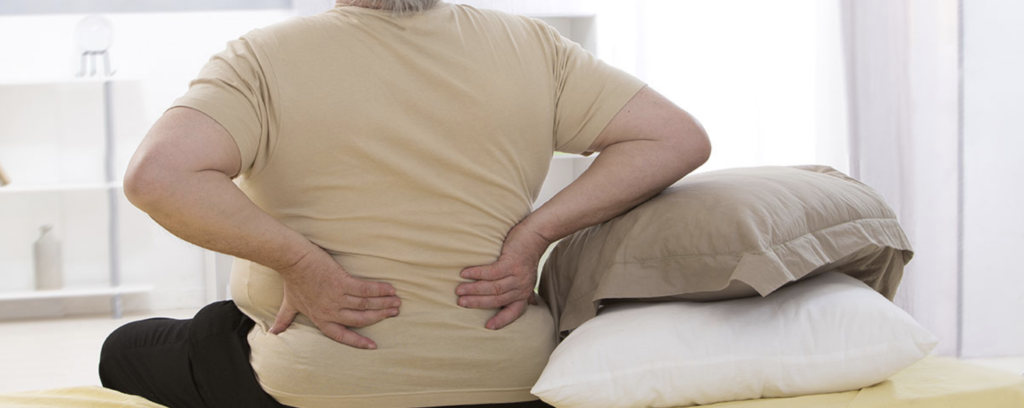The consequences of being overweight on your cardiovascular health are well known and broadcasted on a nearly daily basis. What doesn’t get as much attention is the direct correlation between being overweight or obese and developing bad posture. Studies show that the more significant the weight gain, the worse your posture can become. Things only get worse as bad posture will lead to the most common complaint in the doctor’s office: back pain.
Let’s take a look at how your weight influences your posture and risk of pain, as well as what you can do to prevent it.
How Does Being Overweight Affect Posture?
Being overweight will impact your posture in two key ways: First, the more unnecessary weight that your frame carries, the greater the pressure on your spine; in particular, your lower back.
Second, if you’re like the majority of men and women, you’re carrying the weight in your abdomen. This belly weight forces the body into a forward lean with rounded shoulders, directly contributing to bad posture.
All of this is exacerbated if you work in a desk job, where you’re sitting down for up to 10 hours (if not more) per day. Sitting has been shown to promote rounded shoulders, a forward-favoring head and beck, and overall worse posture.
Is My Posture Causing Back Pain?
Bad posture inevitably leads to back pain with an emphasis in lower back pain. Studies show that your forward-favoring posture is pulling on muscles, joints, and connective tissue; all of which is contributing to your back pain.
What Can I Do to Fix It?
If you are overweight and suffering from bad posture and lower back pain, there are a few things that you can do at home to begin to correct the issue.
Confidence Posture: You can begin to address your back pain by changing your daily walking and sitting posture. The classic confidence posture where you have your chest up, shoulders back, and a neutral gaze can begin to strengthen muscles in the back and abdomen.
Full-Body Weight Loss: The issue might be in your abdomen, but you cannot spot treat this area with sit-ups. You will want to focus on total body weight loss as losing weight from your entire frame can help to alleviate the pressure on your spine, and reduce the natural inclination towards a forward-favoring posture.
Try HIIT: Continuing with the point above, I would recommend a high intensity interval training workout. HIIT workouts have been shown to be superior to traditional low-intensity, long-duration workouts for weight loss. Try the following workout three times per week – It is appropriate for a beginner to intermediate experience level:
- Jump Squats: 16
- Wall Push-ups: 15
- Side Lunges: 12
- Soup Can Reverse Flys: 20
- Mountain Climbers: 30
- Burpees: 5
Complete all of the repetitions for one exercise before moving on to the next. Do not take a break until you’ve completed every exercise on the list. After a 3-minute break, complete the list again.
Visit a Chiropractor: If you’ve been experiencing lower back pain for an extended period of time, you may want to consider visiting a chiropractor. Adjustments and chiropractic therapy have been shown to dramatically reduce pain, especially lower back pain.
Wear a Compression Garment: Back braces that are based on compression technology can help to improve your posture and, as a result, alleviate lower back pain. The FeelWell compression garment combines comfort with scientific design to correct slouching or forward-favoring posture while reducing or eliminating back pain.
Do You Suffer from Lower Back Pain?
Is your weight the cause? What actions will you take to correct it? Have you tried any of the methods listed above? Let us know your results in the comments below!
David Sautter, NASM CPT, FNS; ACE SCS


